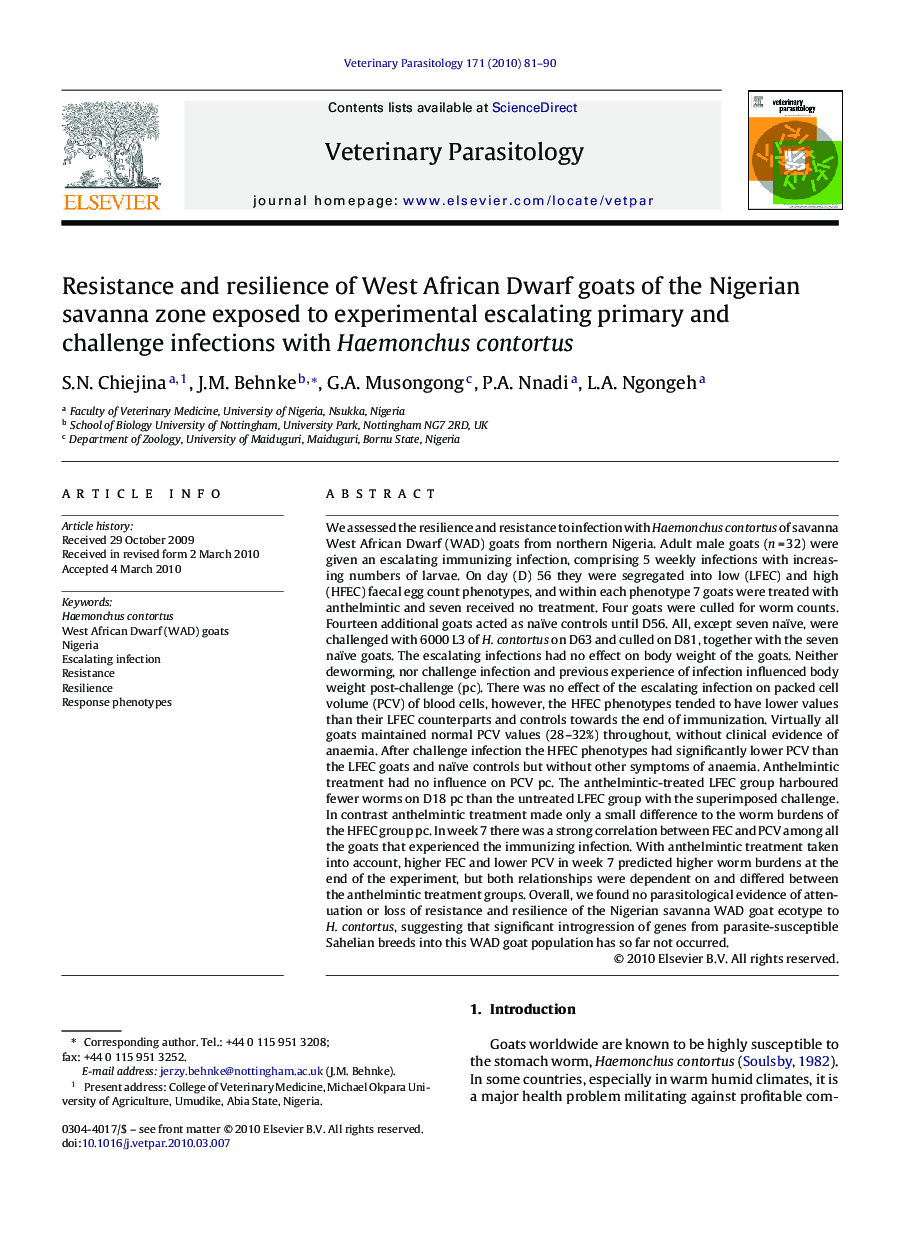| Article ID | Journal | Published Year | Pages | File Type |
|---|---|---|---|---|
| 2470647 | Veterinary Parasitology | 2010 | 10 Pages |
We assessed the resilience and resistance to infection with Haemonchus contortus of savanna West African Dwarf (WAD) goats from northern Nigeria. Adult male goats (n = 32) were given an escalating immunizing infection, comprising 5 weekly infections with increasing numbers of larvae. On day (D) 56 they were segregated into low (LFEC) and high (HFEC) faecal egg count phenotypes, and within each phenotype 7 goats were treated with anthelmintic and seven received no treatment. Four goats were culled for worm counts. Fourteen additional goats acted as naïve controls until D56. All, except seven naïve, were challenged with 6000 L3 of H. contortus on D63 and culled on D81, together with the seven naïve goats. The escalating infections had no effect on body weight of the goats. Neither deworming, nor challenge infection and previous experience of infection influenced body weight post-challenge (pc). There was no effect of the escalating infection on packed cell volume (PCV) of blood cells, however, the HFEC phenotypes tended to have lower values than their LFEC counterparts and controls towards the end of immunization. Virtually all goats maintained normal PCV values (28–32%) throughout, without clinical evidence of anaemia. After challenge infection the HFEC phenotypes had significantly lower PCV than the LFEC goats and naïve controls but without other symptoms of anaemia. Anthelmintic treatment had no influence on PCV pc. The anthelmintic-treated LFEC group harboured fewer worms on D18 pc than the untreated LFEC group with the superimposed challenge. In contrast anthelmintic treatment made only a small difference to the worm burdens of the HFEC group pc. In week 7 there was a strong correlation between FEC and PCV among all the goats that experienced the immunizing infection. With anthelmintic treatment taken into account, higher FEC and lower PCV in week 7 predicted higher worm burdens at the end of the experiment, but both relationships were dependent on and differed between the anthelmintic treatment groups. Overall, we found no parasitological evidence of attenuation or loss of resistance and resilience of the Nigerian savanna WAD goat ecotype to H. contortus, suggesting that significant introgression of genes from parasite-susceptible Sahelian breeds into this WAD goat population has so far not occurred.
